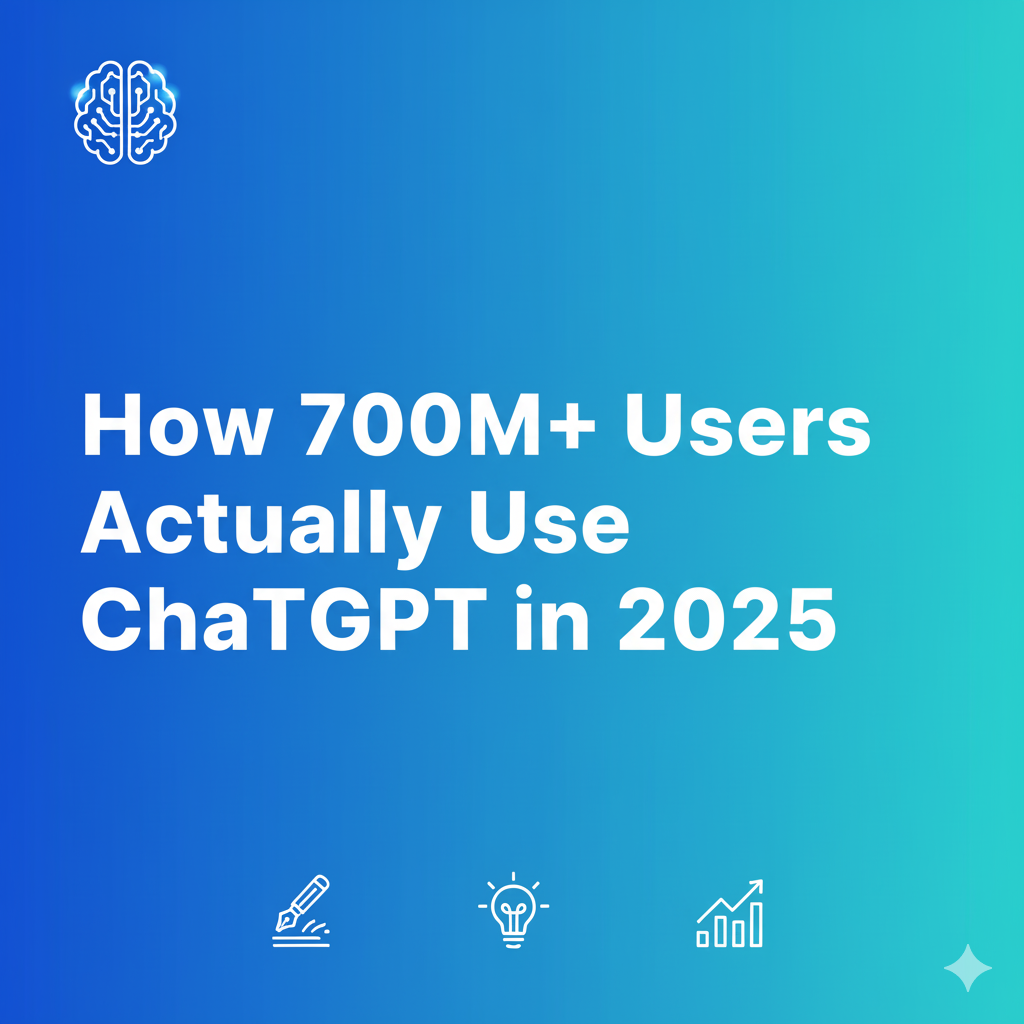How People Actually Use ChatGPT: Lessons, Opportunities, and a Playbook for Entrepreneurs
The artificial intelligence revolution isn’t coming—it’s here. And nowhere is this more evident than in the explosive adoption of ChatGPT, which has fundamentally changed how people work, make decisions, and create content across the globe.
In September 2025, the National Bureau of Economic Research (NBER) released a groundbreaking study that analyzed 1.5 million anonymized ChatGPT conversations, providing unprecedented insights into how over 700 million weekly users are actually leveraging AI in their daily lives. The findings reveal patterns that savvy entrepreneurs and business owners can’t afford to ignore.
The ChatGPT Revolution: By the Numbers
The scale of ChatGPT adoption is staggering. Approximately 10% of the world’s adults now use ChatGPT regularly—a penetration rate that rivals major social media platforms. But unlike social media, ChatGPT represents something far more transformative: it’s becoming an essential tool for decision-making and productivity.
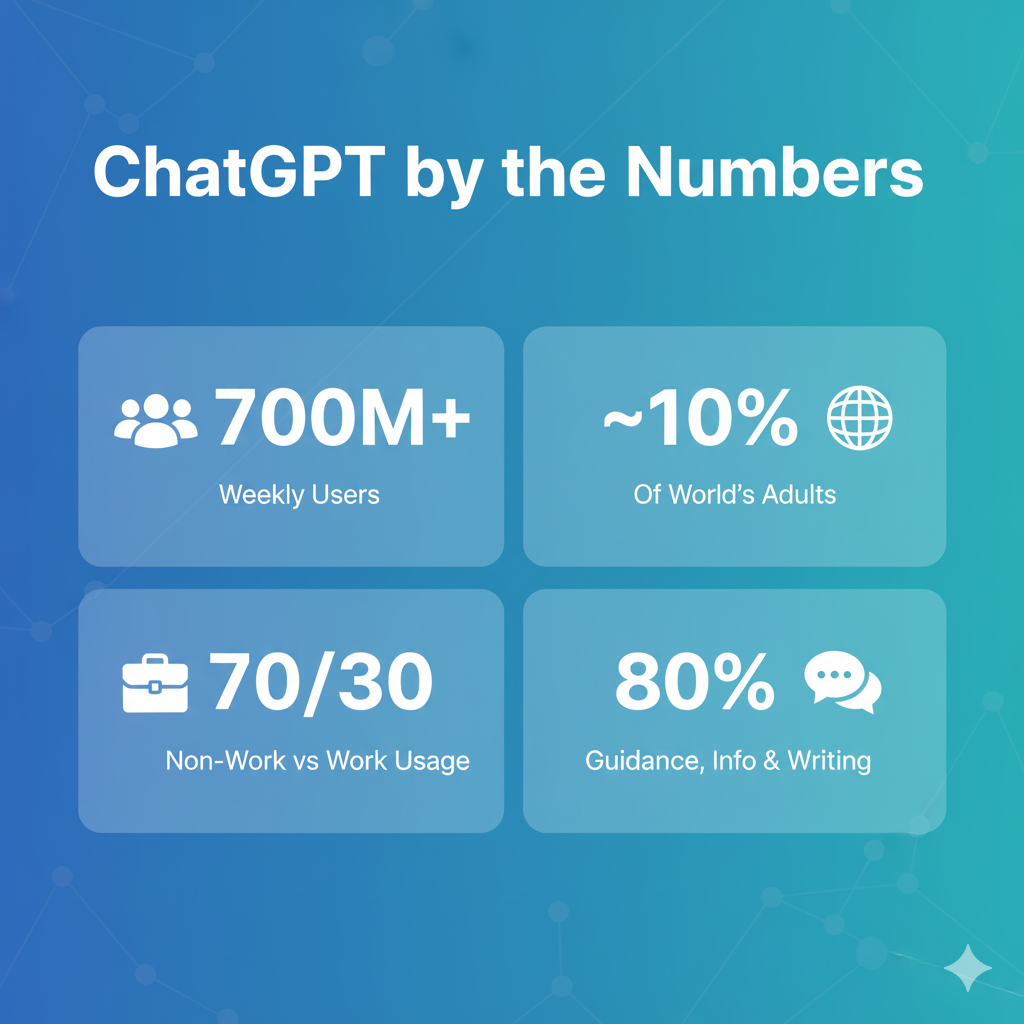
The NBER report reveals that ChatGPT usage follows clear patterns that business leaders can leverage:
Primary Use Cases:
- Guidance and decision support (40% of conversations)
- Information seeking and research (25% of conversations)
- Writing assistance and content creation (35% of conversations)
These three categories represent 80% of all ChatGPT interactions, suggesting that users have moved beyond experimentation to practical, value-driven applications.
Work vs. Personal Use: The Surprising Split
One of the most revealing findings from the research is the 70-30 split between non-work and work-related usage. While personal use dominates overall volume, work-related applications are growing rapidly and generating the highest value per interaction.
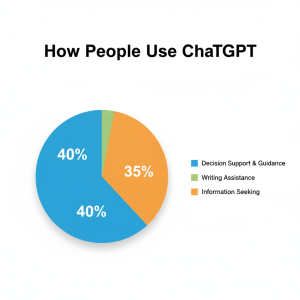
Personal Use Cases Include:
- Travel planning and research
- Health and fitness guidance
- Educational support for children
- Creative writing and brainstorming
- Personal finance advice
- Relationship and social guidance
Professional Applications Focus On:
- Email composition and communication
- Proposal and report writing
- Research and competitive analysis
- Strategic decision-making
- Process documentation
- Customer service responses
The data shows that while people initially adopted ChatGPT for personal curiosity, they quickly discovered its power as a professional multiplier. This shift represents a massive opportunity for entrepreneurs who can bridge the gap between personal and professional AI adoption.
Decision Support: The Ultimate Value Driver
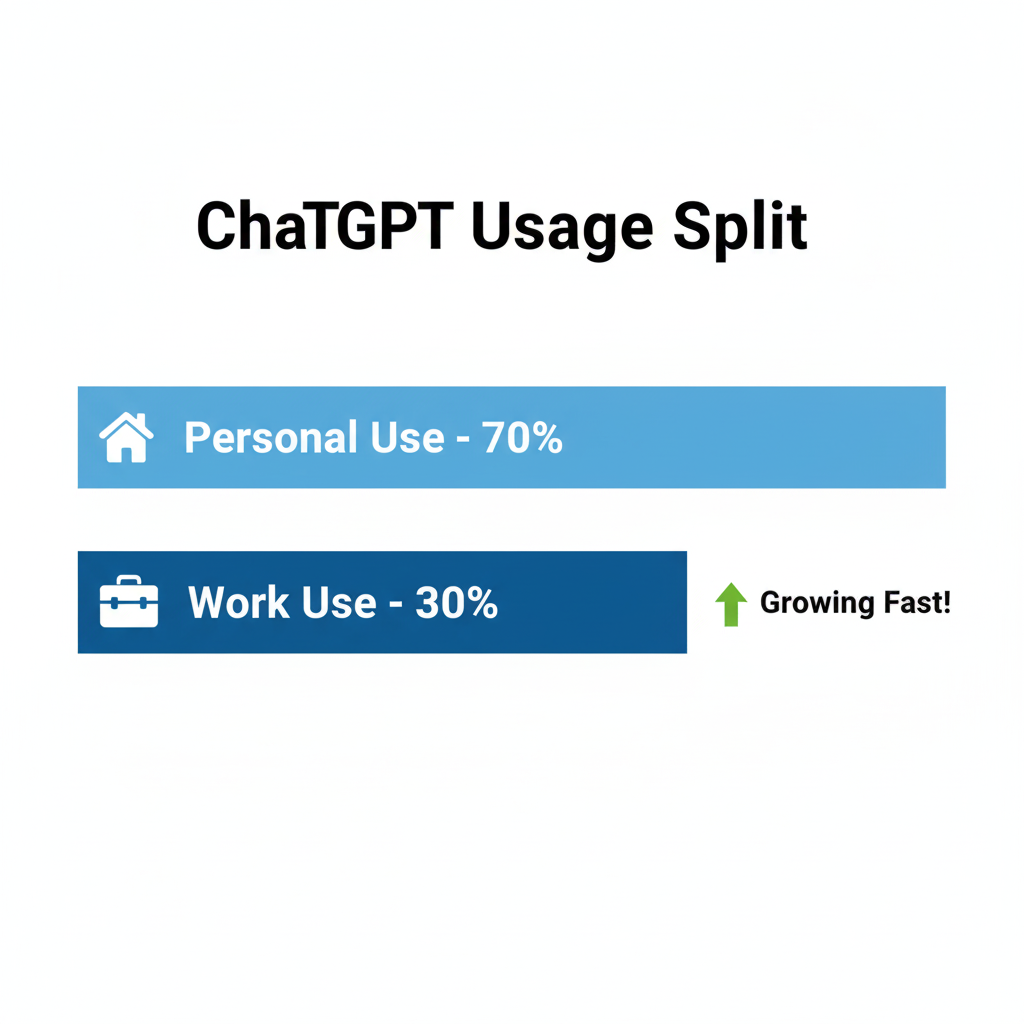
Perhaps the most significant insight from the NBER study is that people value ChatGPT most as an advisor, not just a content generator. Users consistently turn to ChatGPT when facing complex decisions, seeking guidance that combines data analysis with contextual understanding.
This “Ask-Mode” behavior reveals itself in conversations that follow a predictable pattern:
- Context Setting: Users describe their situation in detail
- Option Exploration: They seek help identifying possible choices
- Criteria Development: They work through decision frameworks
- Recommendation Seeking: They ask for specific guidance
- Implementation Planning: They request actionable next steps
Smart entrepreneurs are already building businesses around this decision-support pattern, creating AI-powered advisory services that command premium prices.
Global Democratization: Closing the Wealth Gap
One of the most profound implications of widespread ChatGPT adoption is its potential to close global wealth gaps. The report confirms that AI adoption is accelerating fastest in low- and middle-income countries, creating unprecedented opportunities for educated workers in developing economies.
Why This Matters:
Cost-Effective Expertise: ChatGPT delivers high-quality insights and writing assistance at a fraction of traditional costs, allowing workers in countries like Ghana, India, and the Philippines to compete globally.
Quality Equalization: With AI assistance, a skilled writer in Lagos can produce content that rivals output from New York or London, removing geographical barriers to high-value work.
Market Access: Remote workers can now serve international clients with confidence, knowing they have AI backup for research, writing, and analysis.
This shift is already creating new classes of “AI-augmented freelancers” who can command higher rates by delivering superior quality work faster than traditional competitors.
The Entrepreneur’s Playbook: Million-Dollar AI Businesses
The NBER findings point to several specific business opportunities that entrepreneurs can pursue immediately. The key is understanding that successful AI businesses solve real problems rather than simply showcasing technology.
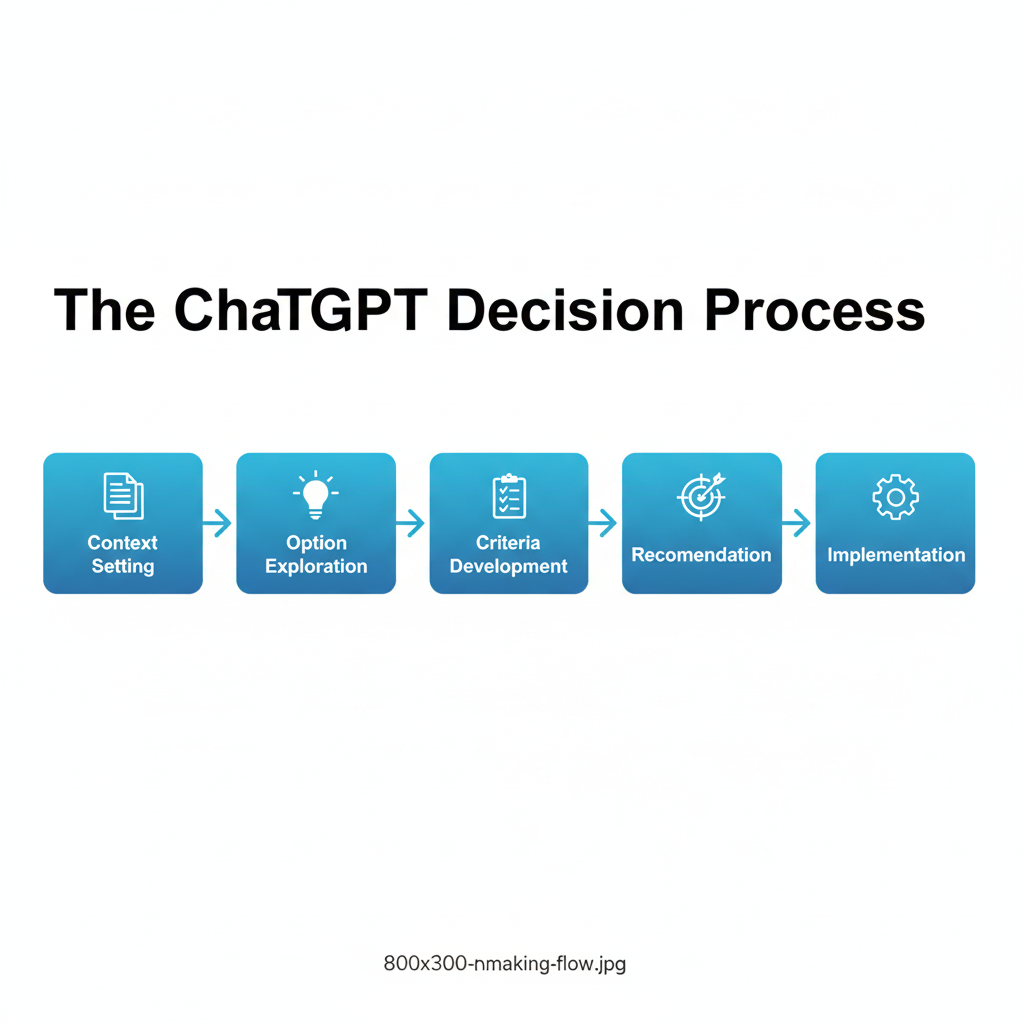
1. Decision-Support Productization
Smart entrepreneurs are packaging “Ask-Mode” functionality into specialized advisory tools:
Industry-Specific Advisors: Tools that help users navigate complex decisions in real estate, investing, career changes, or business strategy.
Process Optimization Engines: Systems that analyze workflows and recommend improvements based on best practices and data.
Risk Assessment Tools: Applications that help users evaluate potential outcomes and make informed choices about major decisions.
2. Writing-Heavy Service Businesses
Since writing represents the strongest work-related value driver, opportunities abound in content creation:
Proposal Laboratories: Services that help businesses win more RFPs, grants, and contracts through AI-enhanced proposal writing.
Content Production Studios: Agencies that combine AI efficiency with human creativity to produce blog posts, social media content, and marketing materials at scale.
Communications Consulting: Services that help executives and teams improve their written communication through AI-powered analysis and suggestions.
3. Guided Niche Tools
The micro-SaaS opportunity is enormous for entrepreneurs who can identify specific decision points where people need guidance:
- “Should I refinance my mortgage?” calculators with personalized advice
- Technology stack recommendation engines for startups
- College essay optimization platforms
- Investment portfolio analysis tools
- Career transition guidance systems
4. Workflow Automation Services
Businesses are hungry for AI solutions that integrate seamlessly into existing processes:
Daily Intelligence Briefings: Services that digest industry news and provide actionable insights to executives and teams.
Compliance Documentation: Tools that automatically generate and update regulatory documents, policies, and procedures.
Customer Success Automation: Systems that predict customer behavior and recommend intervention strategies.
Building Your AI Employee Stack
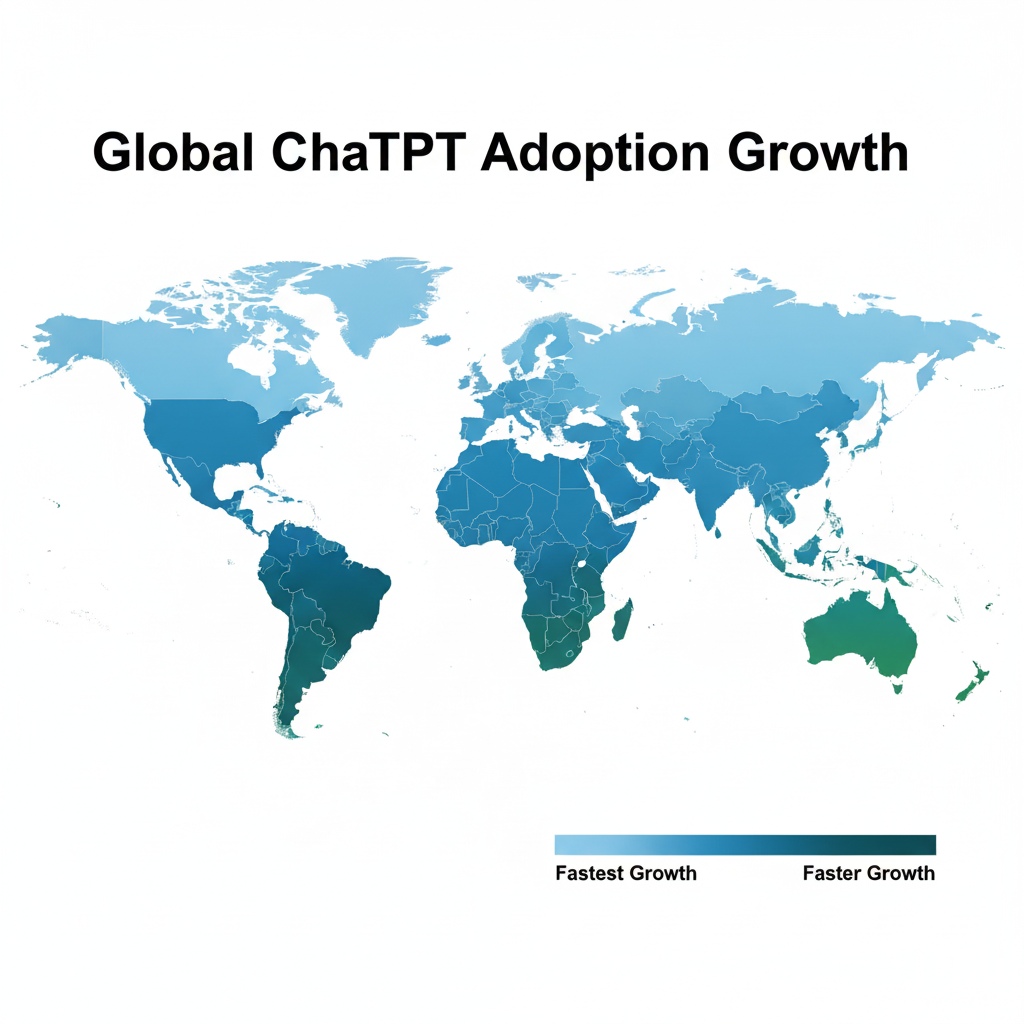
The most successful AI entrepreneurs understand that the future isn’t about replacing human workers—it’s about augmenting human capabilities with specialized AI “employees” that handle routine tasks while humans focus on strategy and relationships.
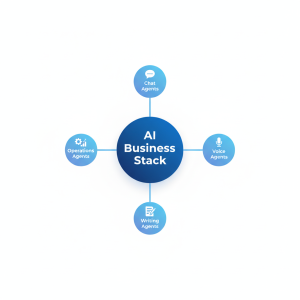
The Four Core AI Employee Types:
1. Chat Agents: Handle customer inquiries, lead qualification, and basic support tasks 24/7.
2. Voice Agents: Manage phone calls, scheduling, and verbal customer interactions with natural conversation abilities.
3. Writing Agents: Produce first drafts of proposals, emails, reports, and marketing content based on templates and guidelines.
4. Operations Agents: Analyze data, generate reports, and provide insights for decision-making.
The Million-Dollar Math:
A solopreneur running 20 clients at $4,000 per month generates $80,000 in monthly recurring revenue—nearly $1 million annually. With AI employees handling routine tasks, this becomes achievable for a single person with the right systems and processes.
The key to success lies not in the AI technology itself, but in developing proprietary templates, decision frameworks, and quality control processes that ensure consistent, high-value output.
Agency Opportunities: Serving the SMB Market
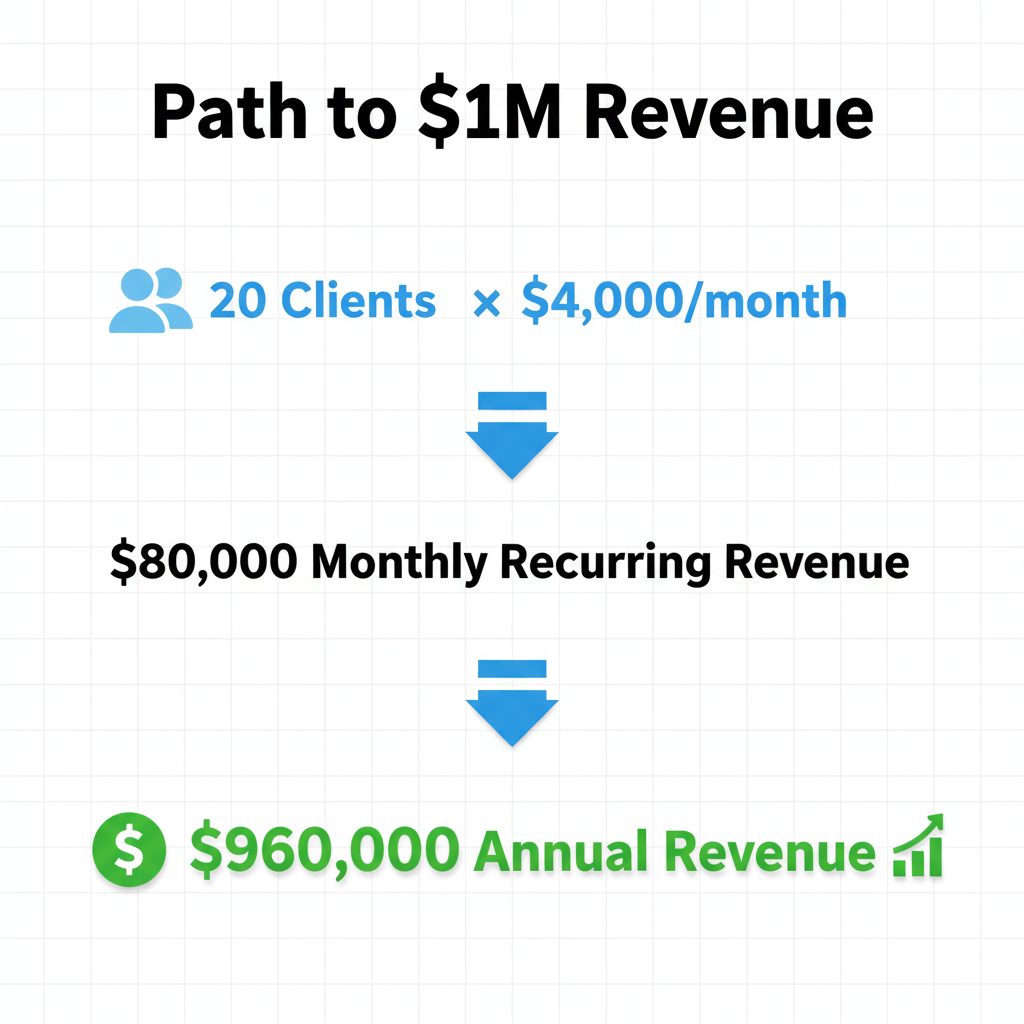
Small and medium businesses represent the largest untapped market for AI services. Most SMBs lack the resources to develop internal AI capabilities but desperately need the efficiency gains that AI can provide.
High-Demand Services Include:
Customer Service Automation: Deploying chatbots and voice agents that handle routine inquiries while escalating complex issues to humans.
Sales Enablement: Creating AI-powered lead qualification systems that identify and nurture prospects automatically.
Content Marketing Engines: Developing systems that produce consistent, branded content across multiple channels.
Knowledge Management: Building internal AI assistants that help employees find information and make decisions quickly.
Compliance and Documentation: Creating systems that maintain current policies, procedures, and regulatory documentation.
Real-World Results: The Cleaning Agency Case Study
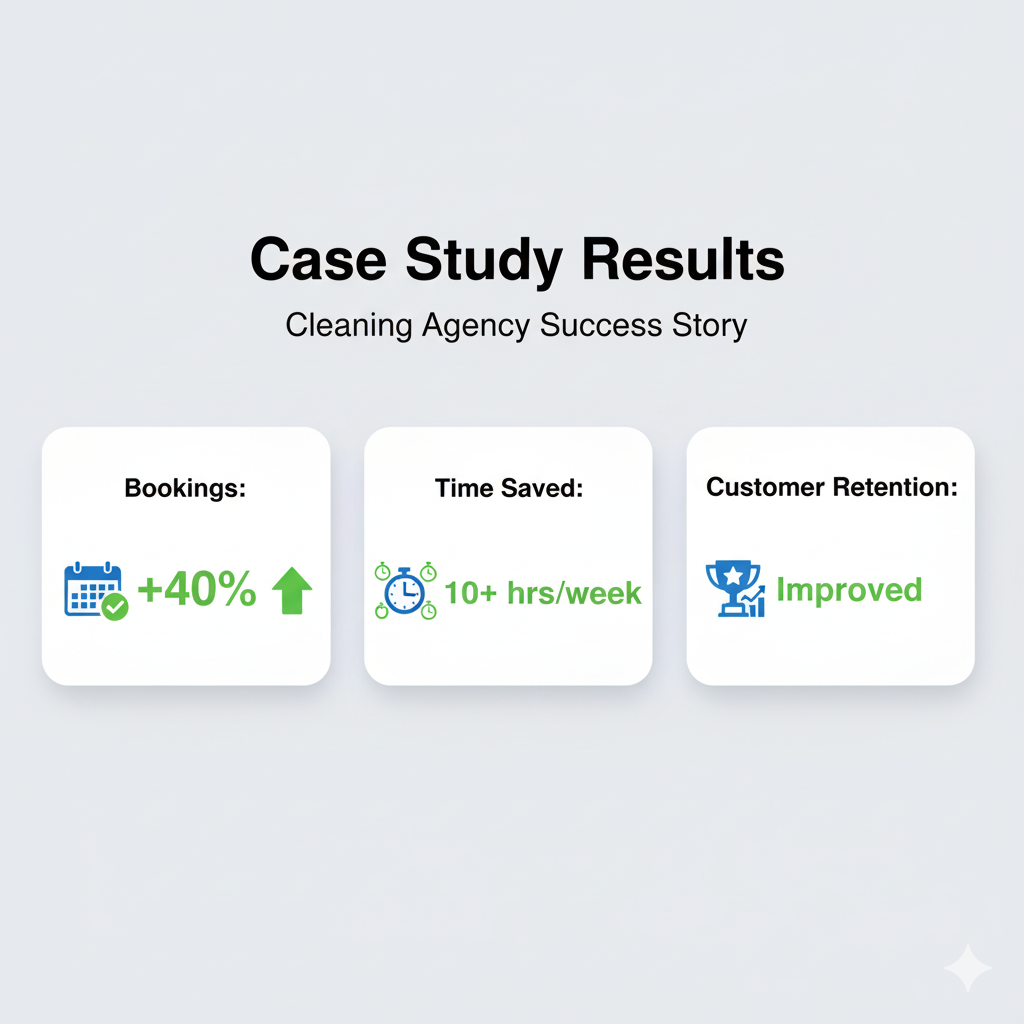
The power of AI implementation becomes clear when examining real results. A U.S. cleaning agency recently deployed a combined chatbot and voice agent system to handle quotes, scheduling, and customer service. The results were dramatic:
- 40% increase in bookings through 24/7 availability and instant response times
- 10+ hours per week saved in administrative tasks, allowing staff to focus on service delivery
- Improved customer retention through faster response times and consistent communication
- Higher average order value through AI-powered upselling during the booking process
The agency’s success came from understanding that AI works best when it enhances human relationships rather than replacing them entirely.
Avoiding Common Pitfalls
While AI presents enormous opportunities, the NBER study also reveals several risks that entrepreneurs must navigate carefully:
Over-Reliance Risks:
Users who become too dependent on AI for decision-making may lose critical thinking skills and become vulnerable to AI limitations or failures.
Content Homogenization:
Without unique perspectives and brand voice, AI-generated content can become generic and fail to differentiate businesses in competitive markets.
User Experience Challenges:
Poorly designed chatbots and voice agents can damage brand relationships and frustrate customers more than traditional communication channels.
Privacy and Governance:
As AI handles more sensitive business information, companies must implement robust data protection and governance frameworks.
Your Action Plan: Getting Started
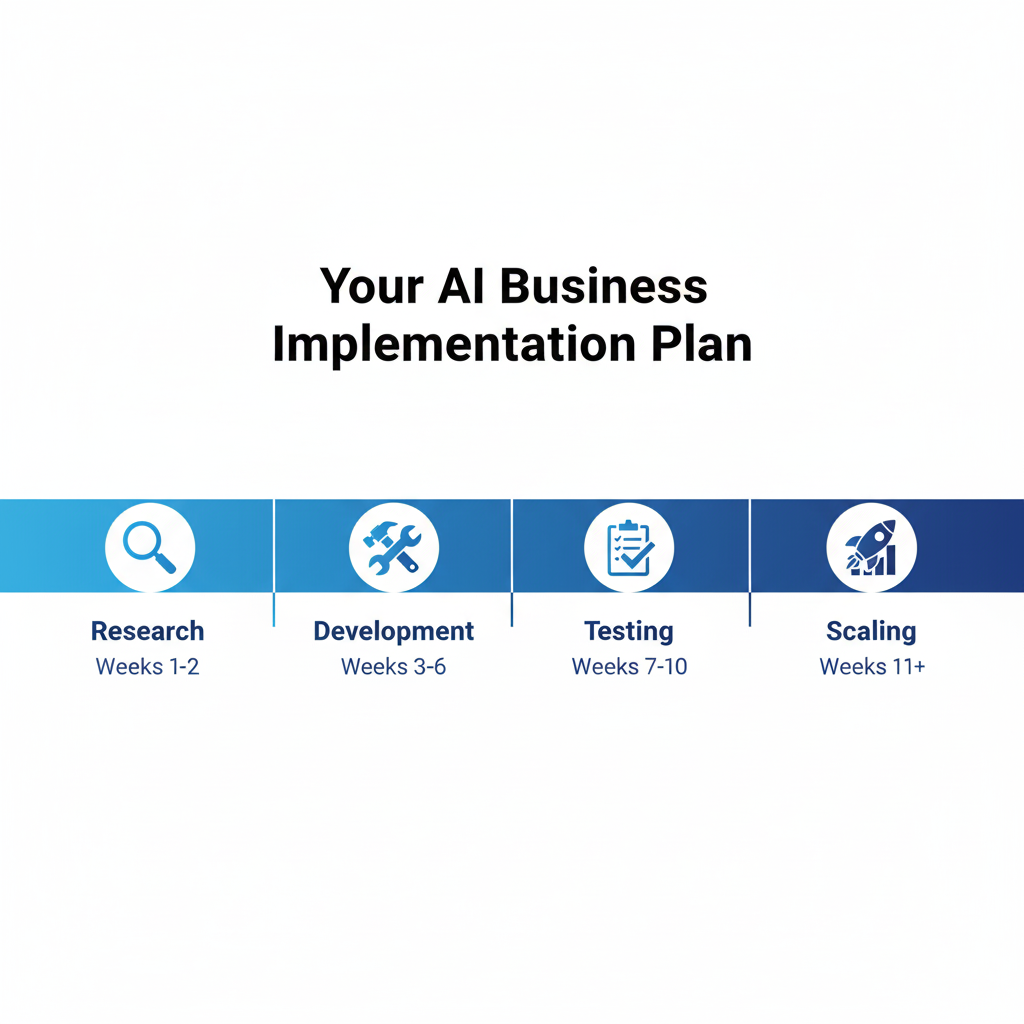
Based on the NBER findings and successful implementations, here’s a practical roadmap for entrepreneurs:
Phase 1: Market Research (Week 1-2)
- Identify a niche with repetitive decision-making or writing needs
- Analyze competitor offerings and pricing models
- Survey potential customers about their current pain points
- Map the decision-making process in your chosen niche
Phase 2: System Development (Week 3-6)
- Define core “Ask-Mode” prompts that lead to actionable recommendations
- Create templates for common outputs (emails, reports, proposals)
- Build a knowledge base of best practices and industry insights
- Develop quality control processes for AI-generated content
Phase 3: Testing and Refinement (Week 7-10)
- Launch with a small group of beta customers
- Track key metrics like response time, customer satisfaction, and business outcomes
- Refine prompts and processes based on real-world feedback
- Document successful workflows for scaling
Phase 4: Scaling (Week 11+)
- Hire and train human assistants to handle exceptions and relationship management
- Add additional AI agents for specialized tasks
- Develop partnerships with complementary service providers
- Create systematic processes for onboarding new clients
The Future is Now
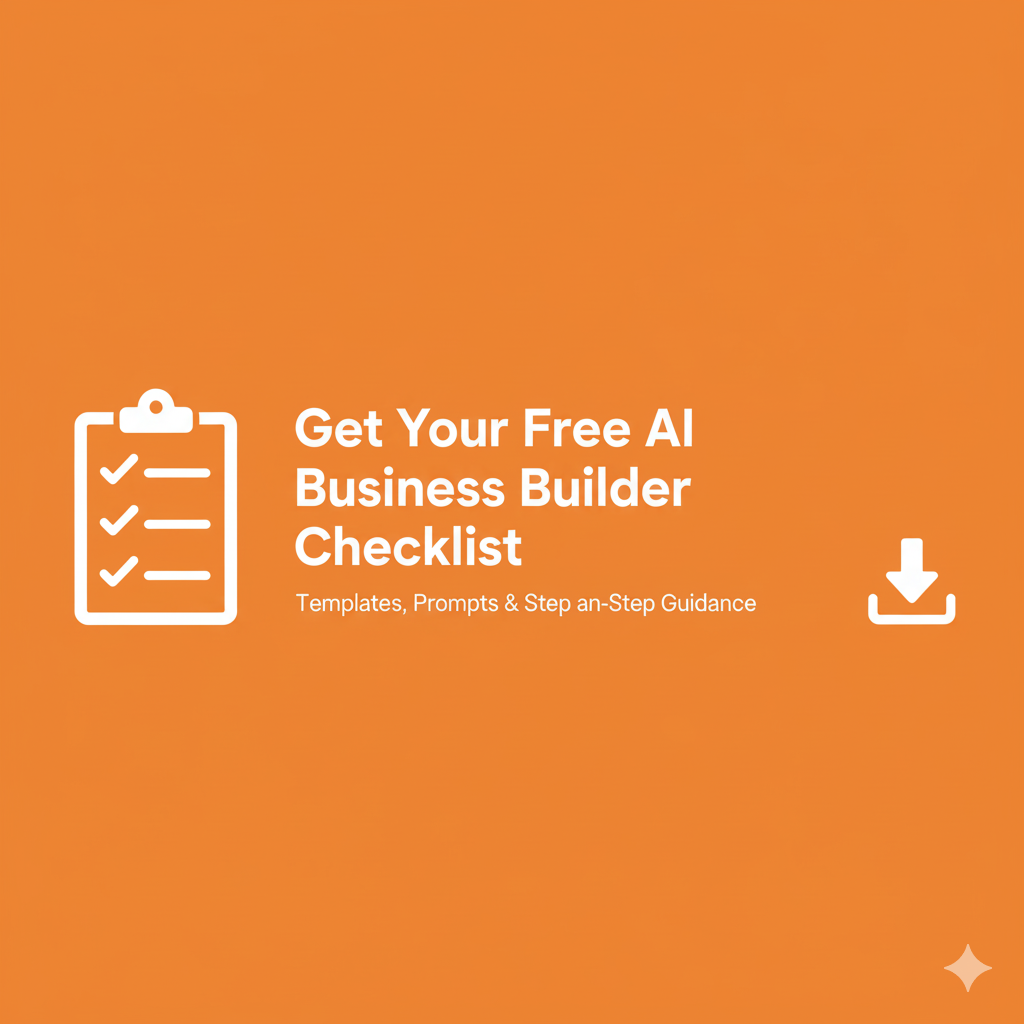
The September 2025 NBER report confirms what forward-thinking entrepreneurs already understand: ChatGPT and AI tools like it aren’t just technological curiosities—they’re fundamental business tools that are reshaping entire industries.
The entrepreneurs who will succeed in the AI economy aren’t necessarily the most technical. They’re the ones who understand human needs, identify genuine problems, and build reliable systems that deliver consistent value.
The playing field is leveling rapidly. Geographic barriers are falling. Traditional advantages are being disrupted. In this new landscape, success will go to those who can execute quickly, build trust systematically, and deliver real value consistently.
The difference won’t be the tools—it will be how you use them.
Ready to build your AI-powered business? Download our free “AI Business Builder Checklist” with templates, prompts, and step-by-step guidance for launching your first AI service. This comprehensive guide includes everything you need to identify opportunities, build systems, and scale your AI business to six figures and beyond.
[Get Your Free Checklist Here – Limited Time]
10 Questions & Answers: How People Actually Use ChatGPT
1. Q: What was the source of the ChatGPT usage data mentioned in the article?
A: The data comes from a September 2025 National Bureau of Economic Research (NBER) report that analyzed 1.5 million anonymized ChatGPT conversations. This landmark study examined how over 700 million weekly users actually interact with ChatGPT, providing unprecedented insights into real-world AI usage patterns.
2. Q: What are the three main ways people use ChatGPT according to the research?
A: The three primary use cases that represent 80% of all ChatGPT conversations are:
- Guidance and decision support (40% of conversations) – People seeking advice on complex decisions
- Writing assistance and content creation (35% of conversations) – Help with emails, reports, proposals, and creative content
- Information seeking and research (25% of conversations) – Finding specific facts and conducting research
3. Q: How does ChatGPT usage split between work and personal activities?
A: The research shows a 70-30 split, with 70% non-work usage and 30% work-related usage. However, while personal use dominates in volume, work-related applications are growing rapidly and generating the highest value per interaction. Work applications include email composition, proposal writing, strategic decision-making, and process documentation.
4. Q: Why is ChatGPT adoption growing faster in developing countries?
A: ChatGPT adoption is accelerating in low- and middle-income countries because it democratizes access to high-quality expertise at low cost. It allows educated workers in countries like Ghana, India, and the Philippines to produce global-standard outputs in writing and analysis, enabling them to compete internationally without geographical barriers. This creates unprecedented opportunities for “AI-augmented freelancers” who can command higher rates.
5. Q: What is the “Ask-Mode” behavior pattern mentioned in the article?
A: “Ask-Mode” refers to how people use ChatGPT as an advisor rather than just a content generator. The pattern follows five steps:
- Context Setting – Users describe their situation in detail
- Option Exploration – Seeking help to identify possible choices
- Criteria Development – Working through decision frameworks
- Recommendation Seeking – Asking for specific guidance
- Implementation Planning – Requesting actionable next steps
6. Q: How can a single entrepreneur realistically build a million-dollar business using AI?
A: The article outlines the “million-dollar math”: 20 clients paying $4,000/month equals $80,000 in monthly recurring revenue (nearly $1M annually). This becomes achievable by building an “AI employee stack” with four types of AI agents:
- Chat Agents for lead generation and support
- Voice Agents for sales and service calls
- Writing Agents for proposals, SOPs, and content
- Operations Agents for analytics and reporting The key is developing proprietary templates, prompts, and decision frameworks that ensure consistent, high-value output.
7. Q: What specific results did the cleaning agency case study achieve?
A: The U.S. cleaning agency that deployed AI chatbot and voice agent systems achieved impressive results in just 30 days:
- 40% increase in bookings through 24/7 availability and instant responses
- 10+ hours per week saved in administrative tasks, allowing staff to focus on service delivery
- Improved customer retention through faster response times and consistent communication
- Higher average order value through AI-powered upselling during booking processes
8. Q: What are the main risks of relying too heavily on ChatGPT for business?
A: The article identifies four key risks:
- Over-reliance risks – Users may lose critical thinking skills and become vulnerable to AI limitations
- Content homogenization – Without unique perspectives, AI-generated content becomes generic and fails to differentiate businesses
- User experience challenges – Poorly designed chatbots can damage brand relationships and frustrate customers
- Privacy and governance issues – Companies need robust data protection frameworks as AI handles sensitive information
9. Q: What is the 4-phase implementation plan for starting an AI business?
A: The article outlines a practical roadmap:
- Phase 1: Market Research (Weeks 1-2) – Identify niche needs, analyze competitors, survey potential customers, map decision-making processes
- Phase 2: System Development (Weeks 3-6) – Define core prompts, create templates, build knowledge bases, develop quality control processes
- Phase 3: Testing and Refinement (Weeks 7-10) – Launch with beta customers, track key metrics, refine based on feedback, document workflows
- Phase 4: Scaling (Week 11+) – Hire assistants, add specialized AI agents, develop partnerships, systematize client onboarding
10. Q: What makes AI-powered businesses different from traditional service businesses?
A: AI-powered businesses have several key advantages:
- Scalability without proportional staff increases – AI employees handle routine tasks while humans focus on strategy and relationships
- 24/7 availability – AI agents can work around the clock for customer service, lead capture, and basic interactions
- Consistent quality output – Properly configured AI systems deliver standardized results based on proven templates and frameworks
- Global competitive advantage – Geographic barriers are reduced, allowing businesses to serve international clients efficiently
- Data-driven insights – AI systems can analyze patterns and provide recommendations for business optimization
The key differentiator isn’t the AI technology itself, but the proprietary systems, processes, and expertise that entrepreneurs build around the AI tools to deliver consistent value to clients.

